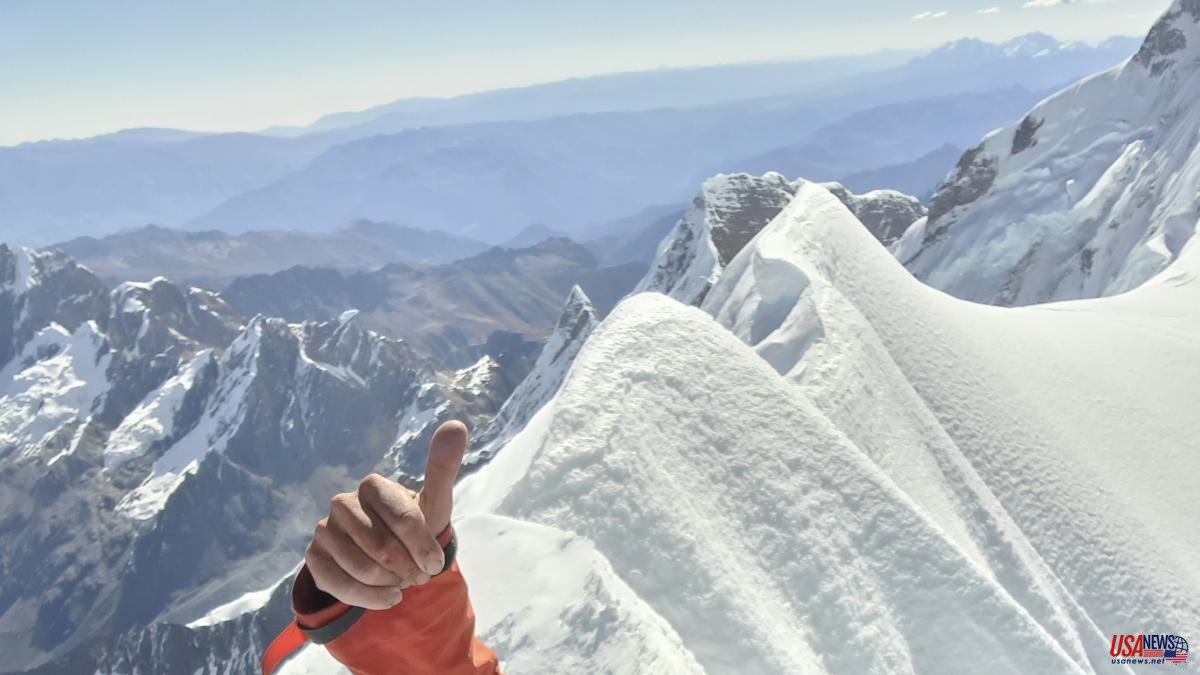Catalan mountaineers Marc Toralles and Bru Busom have shown once again that great adventures do not need to be found in mountains over 8,000 metres. The Siula Grande, of 6,344, has given them the most demanding alpine-style climbing that they have signed up to now and that they have successfully culminated with the opening of a route through the hitherto virgin wall of this mountain in the Cordillera of Huayhuash, in the Andes of Peru. "It is the time that we have been afraid for a longer time, with a lot of tension, many stones fell, a python was released in a rappel, Bru dislocated a shoulder..., but we have been lucky," Toralles reported yesterday by phone from Huaraz .
"Twenty minutes before reaching the top, on the 15th at 2:50 p.m., Bru fell into a crevasse and his shoulder slipped out of place, but he was able to fit it back in and we continued climbing," Toralles details. The two climbers try to move up the return flight so that Brusom can be treated for this injury at home.
The Siula Grande has been a motivation to accelerate Toralles' return to the most committed projects since, in January 2021, he broke the calcareous bone of each foot and the talus and scaphoid of his right foot in a fall. "Four months ago I had surgery for the second time and it was not until two months ago that I was able to remove the orthopedic boot from my right foot. During the climb I noticed that I have a lack of strength and that I have lost mobility, I lack strength in my calf muscles", Explain.
Toralles, 39, and Busom, 30, reached the base of the wall, at about 5,400 meters, on the 11th with the aim of consummating a plan that both already caressed in 2019 with another of their usual companions, Roger Carach. On that occasion, on the fourth day of evolution along the wall, stones fell on them, one of which hit Cararach's shoulder and arm, causing a wound that pierced his bone. Alone up there and at risk of infection, they decided to go down. Three years later they have finished the project.
One of the risks that they already knew would appear is precisely the detachment of ice and rocks, which is why they chose to climb a few days from noon and after dark. "We faced the first part of the ascent in big wall style, it was a difficult section in which we could not afford to go light. From the second half we left the backpack in a cave and continued in alpine style," he says.
Although Toralles was not at 100% due to the consequences on his feet, the couple considered that now was the time to try the Siula Grande along an unprecedented route, knowing that an Italian expedition, led by Matteo Della Bordella, also he intended to draw a new itinerary along the same east wall. "They wanted to do a different route but in the end they gave up. The day we went down, last Saturday, we arrived at the base camp at nine o'clock at night and the Italians invited us to dinner," says Toralles. In fact, Della Bordella had already tried it in 2017 but the mountain conditions soon aborted the initiative.
.The Catalan mountaineers agree that it has been the most demanding climb they have done so far due "to its extreme difficulty, to the falling stones, to the continuous tension, to the fact that it has been very difficult to protect ourselves...", he continues explaining. The name they have chosen for the new route, with a difference of more than a thousand meters and with difficulties of 7b, A3, A15 and M6, is Ànima de corall, in tribute to several friends who have lost their lives, one in the mountains and others on the road.
Toralles and Brusom have a brilliant resume that includes the Slovak Direct from Denali, Alaska; the Japanese Corridor of the Grandes Jorasses during the day, also with Roger Cararach, or a new itinerary along the west face of the Grand Charmoz, in the Mont-Blanc massif, which they named Le Grand Charme, with Martín Elías, among other outstanding routes. Toralles says that one day he would like to return to Pakistan to attempt the southern pillar of Gasherbrum IV.













